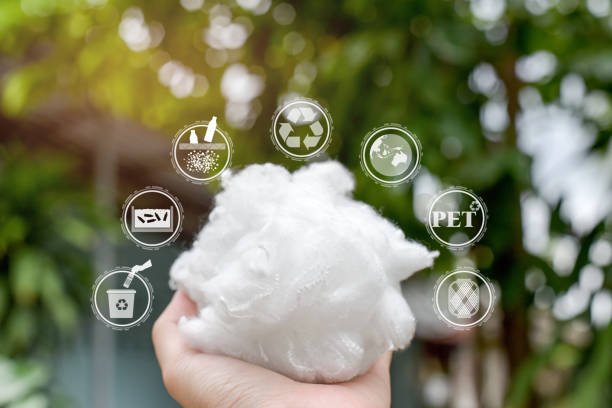In an era where environmental sustainability is paramount, innovative solutions are essential to mitigate the adverse impacts of industrial practices. Woolrec emerges as a pioneering force in the realm of textile recycling, specifically focusing on wool—a natural fiber known for its durability and biodegradability. By reimagining the lifecycle of wool, Woolrec not only reduces waste but also fosters a circular economy that benefits both industries and the planet.
What is Woolrec?
Woolrec is an advanced wool recycling technology that transforms discarded wool textiles into high-quality fibers suitable for various applications. Unlike traditional recycling methods that often degrade material quality, Woolrec employs a combination of mechanical and chemical processes to regenerate wool fibers, preserving their inherent properties. This approach ensures that recycled wool maintains the strength, softness, and resilience characteristic of virgin wool, making it ideal for reuse in fashion, interiors, and industrial products.
The Importance of Woolrec in Today’s World
1. Addressing Textile Waste
The global textile industry generates millions of tons of waste annually, with wool-based products contributing significantly to this burden. Woolrec offers a sustainable solution by diverting wool waste from landfills and repurposing it into valuable materials, thereby reducing environmental pollution and conserving resources.
2. Promoting Circular Economy
By enabling the continuous reuse of wool fibers, Woolrec exemplifies the principles of a circular economy. This model minimizes the need for virgin materials, reduces energy consumption, and lowers carbon emissions associated with traditional wool production. As industries and consumers increasingly prioritize sustainability, Woolrec provides a scalable and effective means to achieve these goals.
3. Supporting Sustainable Fashion
The fashion industry is undergoing a transformation, with a growing emphasis on eco-friendly practices. Woolrec supports this shift by supplying high-quality recycled wool that can be used in the production of garments, accessories, and textiles. This not only meets consumer demand for sustainable products but also helps brands reduce their environmental footprint.
How Woolrec Works
The Woolrec process involves several key stages to ensure the efficient recycling of wool fibers:
-
Collection: Discarded wool garments and textiles are sourced from various channels, including consumers, retailers, and manufacturers.
-
Sorting and Grading: Materials are sorted based on fiber content, color, and quality to ensure optimal recycling outcomes.
-
Cleaning and Decontamination: Advanced cleaning methods remove impurities, dyes, and contaminants from the wool fibers.
-
Mechanical or Chemical Recycling: Depending on the material’s condition, either mechanical or chemical processes are employed to break down the wool fibers into their base components.
-
Spinning into New Yarn: The regenerated fibers are spun into yarns, which can then be used in manufacturing new products.
-
Manufacturing of New Products: Recycled wool is utilized in creating a wide range of products, including clothing, upholstery, insulation materials, and automotive components.
Applications of Woolrec
1. Fashion Industry
Woolrec enables fashion brands to produce garments such as coats, sweaters, and accessories using recycled wool, combining sustainability with style.
2. Home and Interior Design
Recycled wool is used in creating home textiles like rugs, carpets, and blankets, offering natural insulation and comfort while promoting eco-friendly living.
3. Industrial Manufacturing
Industries utilize Woolrec for applications such as soundproof panels, thermal insulation, and automotive interiors, showcasing the versatility of recycled wool in various sectors.
Advantages of Woolrec
-
Eco-Friendly: Reduces textile waste and minimizes environmental pollution.
-
Cost-Effective: Recycled wool can lower manufacturing expenses compared to using virgin materials.
-
Consumer Appeal: Eco-conscious consumers are increasingly seeking products made from sustainable materials.
-
Business Growth: Companies adopting Woolrec can tap into the growing market for sustainable products.
Challenges and Solutions
1. Mixed Fabrics
Wool is often blended with synthetic fibers, complicating the recycling process. Advanced sorting technologies and improved recycling methods are being developed to address this challenge.
2. Infrastructure Limitations
Not all regions have access to facilities capable of processing wool waste. Investing in recycling infrastructure and establishing collection networks can help overcome this barrier.
3. Consumer Awareness
Many consumers are unaware of the benefits of wool recycling. Educational campaigns and transparent labeling can increase awareness and encourage responsible consumption.
The Future of Woolrec
As sustainability becomes increasingly important, the demand for recycled wool products is expected to rise. Woolrec is poised to play a significant role in meeting this demand, driving innovation in recycling technologies, and promoting a more sustainable textile industry.
Conclusion
Woolrec represents a significant advancement in sustainable wool recycling, offering a viable solution to the challenges posed by textile waste. Through innovative processes and applications, Woolrec not only contributes to environmental conservation but also supports the growth of a circular economy. By embracing Woolrec, industries and consumers alike can take meaningful steps toward a more sustainable future.

